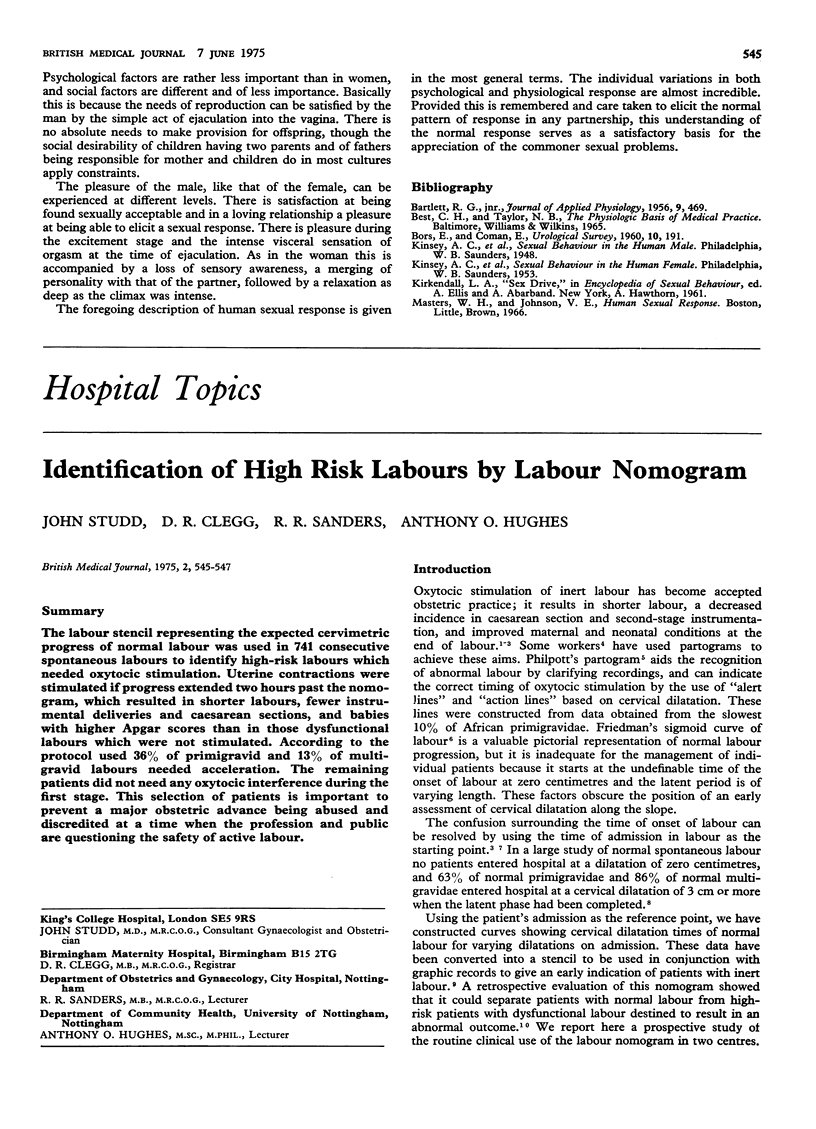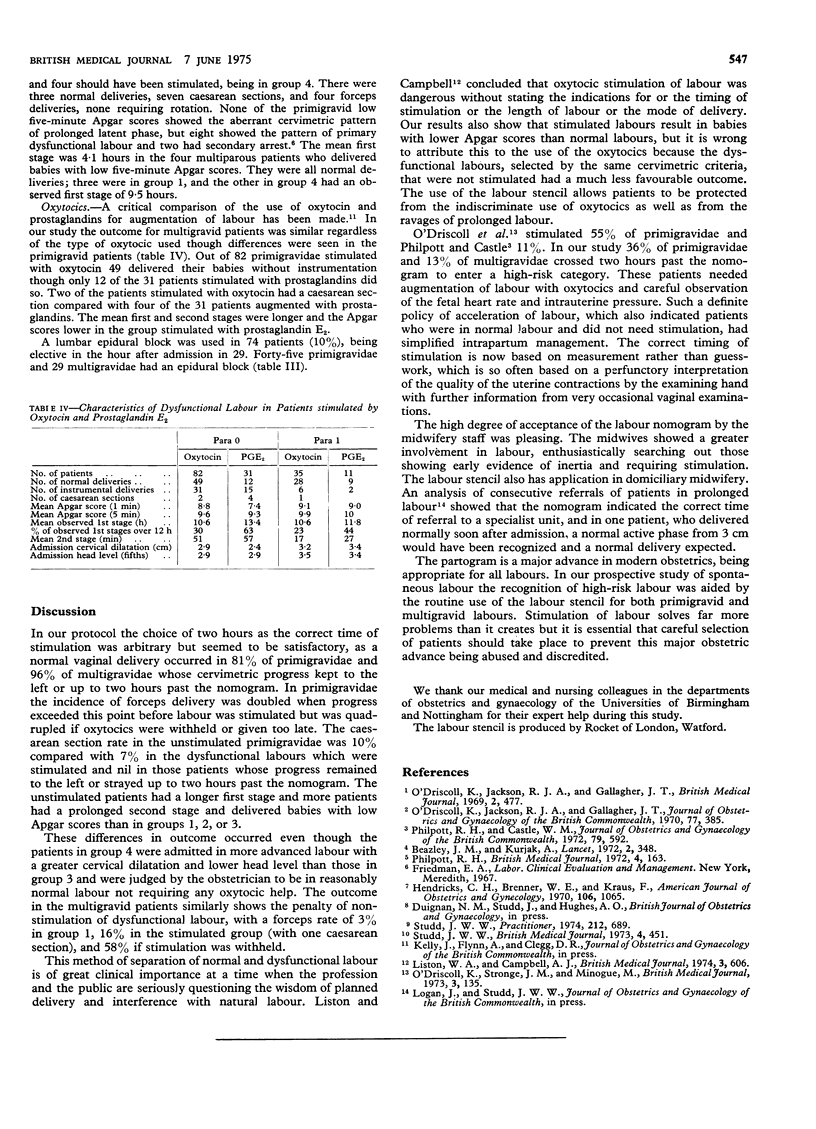Abstract
The labour stencil representing the expected cervimetric progress of normal labour was used in 741 consecutive spontaneous labours to identify high-risk labours which needed oxytocic stimulation. Uterine contractions were stimulated if progress extended two hours past the nomogram, which resulted in shorter labours, fewer instrumental deliveries and caesarean sections, and babies with higher Apgar scores than in those dysfunctional labours which were not stimulated. According to the protocol used 36% of primigravid and 13% of multigravid labours needed acceleration. The remaining patients did not need any oxytocic interference during the first stage. This selection of patients is important to prevent a major obstetric advance being abused and discredited at a time when the profession and public are questioning the safety of active labour.
Full text
PDF


Selected References
These references are in PubMed. This may not be the complete list of references from this article.
- Beazley J. M., Kurjak A. Influence of a partograph on the active management of labour. Lancet. 1972 Aug 19;2(7773):348–351. doi: 10.1016/s0140-6736(72)91735-7. [DOI] [PubMed] [Google Scholar]
- Hendricks C. H., Brenner W. E., Kraus G. Normal cervical dilatation pattern in late pregnancy and labor. Am J Obstet Gynecol. 1970 Apr 1;106(7):1065–1082. doi: 10.1016/s0002-9378(16)34092-3. [DOI] [PubMed] [Google Scholar]
- Liston W. A., Campbell A. J. Dangers of oxytocin-induced labour to fetuses. Br Med J. 1974 Sep 7;3(5931):606–607. doi: 10.1136/bmj.3.5931.606. [DOI] [PMC free article] [PubMed] [Google Scholar]
- O'Driscoll K., Jackson R. J., Gallagher J. T. Active management of labour and cephalopelvic disproportion. J Obstet Gynaecol Br Commonw. 1970 May;77(5):385–389. doi: 10.1111/j.1471-0528.1970.tb03539.x. [DOI] [PubMed] [Google Scholar]
- O'Driscoll K., Jackson R. J., Gallagher J. T. Prevention of prolonged labour. Br Med J. 1969 May 24;2(5655):477–480. doi: 10.1136/bmj.2.5655.477. [DOI] [PMC free article] [PubMed] [Google Scholar]
- O'Driscoll K., Stronge J. M., Minogue M. Active management of labour. Br Med J. 1973 Jul 21;3(5872):135–137. doi: 10.1136/bmj.3.5872.135. [DOI] [PMC free article] [PubMed] [Google Scholar]
- Philpott R. H., Castle W. M. Cervicographs in the management of labour in primigravidae. I. The alert line for detecting abnormal labour. J Obstet Gynaecol Br Commonw. 1972 Jul;79(7):592–598. doi: 10.1111/j.1471-0528.1972.tb14207.x. [DOI] [PubMed] [Google Scholar]
- Philpott R. H. Graphic records in labour. Br Med J. 1972 Oct 21;4(5833):163–165. doi: 10.1136/bmj.4.5833.163. [DOI] [PMC free article] [PubMed] [Google Scholar]
- Studd J. Partograms and nomograms of cervical dilatation in management of primigravid labour. Br Med J. 1973 Nov 24;4(5890):451–455. doi: 10.1136/bmj.4.5890.451. [DOI] [PMC free article] [PubMed] [Google Scholar]
- Studd J. The prevention of prolonged labour. Practitioner. 1974 May;212(1271):689–695. [PubMed] [Google Scholar]


